Exploring personalized structural connectomics for moderate to severe traumatic brain injury
- PMID: 37334004
- PMCID: PMC10270710
- DOI: 10.1162/netn_a_00277
Exploring personalized structural connectomics for moderate to severe traumatic brain injury
Abstract
Graph theoretical analysis of the structural connectome has been employed successfully to characterize brain network alterations in patients with traumatic brain injury (TBI). However, heterogeneity in neuropathology is a well-known issue in the TBI population, such that group comparisons of patients against controls are confounded by within-group variability. Recently, novel single-subject profiling approaches have been developed to capture inter-patient heterogeneity. We present a personalized connectomics approach that examines structural brain alterations in five chronic patients with moderate to severe TBI who underwent anatomical and diffusion magnetic resonance imaging. We generated individualized profiles of lesion characteristics and network measures (including personalized graph metric GraphMe plots, and nodal and edge-based brain network alterations) and compared them against healthy reference cases (N = 12) to assess brain damage qualitatively and quantitatively at the individual level. Our findings revealed alterations of brain networks with high variability between patients. With validation and comparison to stratified, normative healthy control comparison cohorts, this approach could be used by clinicians to formulate a neuroscience-guided integrative rehabilitation program for TBI patients, and for designing personalized rehabilitation protocols based on their unique lesion load and connectome.
Keywords: Graph theory; Lesion filling; Personalized connectomics; Personalized medicine; Structural connectomics; Traumatic brain injury.
© 2022 Massachusetts Institute of Technology.
Figures


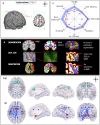
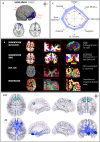
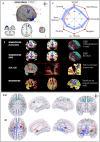
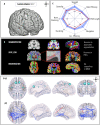
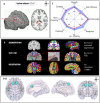
Similar articles
-
Connectomic assessment of injury burden and longitudinal structural network alterations in moderate-to-severe traumatic brain injury.Hum Brain Mapp. 2022 Sep;43(13):3944-3957. doi: 10.1002/hbm.25894. Epub 2022 Apr 29. Hum Brain Mapp. 2022. PMID: 35486024 Free PMC article.
-
Improving quantitative susceptibility mapping for the identification of traumatic brain injury neurodegeneration at the individual level.Z Med Phys. 2024 Feb 8:S0939-3889(24)00001-1. doi: 10.1016/j.zemedi.2024.01.001. Online ahead of print. Z Med Phys. 2024. PMID: 38336583
-
Topological Aberrance of Structural Brain Network Provides Quantitative Substrates of Post-Traumatic Brain Injury Attention Deficits in Children.Brain Connect. 2021 Oct;11(8):651-662. doi: 10.1089/brain.2020.0866. Epub 2021 May 6. Brain Connect. 2021. PMID: 33765837 Free PMC article.
-
Neuroimaging of structural pathology and connectomics in traumatic brain injury: Toward personalized outcome prediction.Neuroimage Clin. 2012 Aug 24;1(1):1-17. doi: 10.1016/j.nicl.2012.08.002. eCollection 2012. Neuroimage Clin. 2012. PMID: 24179732 Free PMC article. Review.
-
Connectomics and graph theory analyses: Novel insights into network abnormalities in epilepsy.Epilepsia. 2015 Nov;56(11):1660-8. doi: 10.1111/epi.13133. Epub 2015 Sep 22. Epilepsia. 2015. PMID: 26391203 Review.
Cited by
-
Clinical Theragnostic Signature of Extracellular Vesicles in Traumatic Brain Injury (TBI).ACS Chem Neurosci. 2023 Sep 6;14(17):2981-2994. doi: 10.1021/acschemneuro.3c00386. Epub 2023 Aug 25. ACS Chem Neurosci. 2023. PMID: 37624044 Free PMC article. Review.
-
Brain network communication: concepts, models and applications.Nat Rev Neurosci. 2023 Sep;24(9):557-574. doi: 10.1038/s41583-023-00718-5. Epub 2023 Jul 12. Nat Rev Neurosci. 2023. PMID: 37438433 Review.
-
Resolving inter-regional communication capacity in the human connectome.Netw Neurosci. 2023 Oct 1;7(3):1051-1079. doi: 10.1162/netn_a_00318. eCollection 2023. Netw Neurosci. 2023. PMID: 37781139 Free PMC article.
-
Structural-functional connectivity bandwidth predicts processing speed in mild traumatic brain Injury: A multiplex network analysis.Neuroimage Clin. 2023;38:103428. doi: 10.1016/j.nicl.2023.103428. Epub 2023 May 5. Neuroimage Clin. 2023. PMID: 37167841 Free PMC article.
-
Mild traumatic brain injury increases cortical iron: evidence from individual susceptibility mapping.Brain Commun. 2025 Mar 12;7(2):fcaf110. doi: 10.1093/braincomms/fcaf110. eCollection 2025. Brain Commun. 2025. PMID: 40161218 Free PMC article.
References
-
- Avants, B. B., Tustison, N., & Song, G. (2009). Advanced normalization tools (ANTS). Insight Journal, 2(365), 1–35. 10.54294/uvnhin - DOI
Grants and funding
LinkOut - more resources
Full Text Sources
